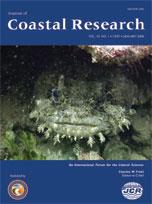A significant challenge to remote sensing of submerged ecosystems in the littoral zone is correcting the signal received at the sensor for the complex and variable effects of the water column. Remote sensing scientists often assume that the optical properties of a scene do not vary horizontally and thus assume that a single attenuation coefficient can be applied for water column correction. The validity of this assumption is tested in this case study. Multispectral vertical water column profiles were collected in the field with a dropsonde radiometer to examine the wavelength-specific behaviour of light in a tropical coral reef environment with variable water depths and bottom types. Cluster analysis results indicated that on a wavelength-specific basis, the majority (no less than 70%) of both the downwelling irradiance and upwelling radiance profiles can be categorized as one cluster, indicating that the assumption of horizontal consistency is valid. ANOVA revealed that significant variability in downwelling irradiance and upwelling radiance attenuation coefficients is explained by water depth when bottom type remains constant. Conversely, ANOVA also revealed that insignificant variability is explained by change in bottom type when water depth remains constant.
How to translate text using browser tools
1 January 2008
An Examination of Variability in Vertical Radiometric Profiles in a Coral Reef Environment
Heather Holden,
Ellsworth LeDrew
ACCESS THE FULL ARTICLE

Journal of Coastal Research
Vol. 2008 • No. 241
January 2008
Vol. 2008 • No. 241
January 2008
Optical attenuation coefficients
remote sensing
water optics




